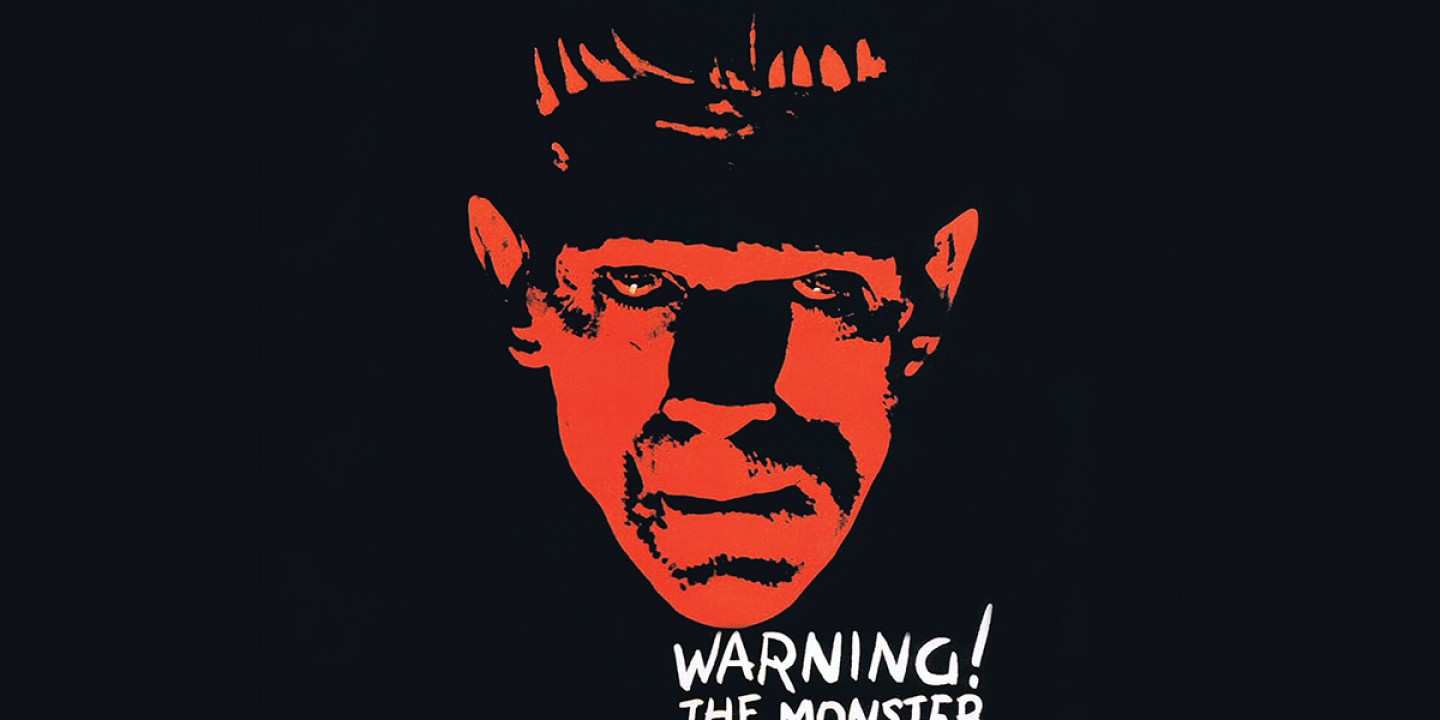Mary Shelley’s Frankenstein and the monster of Whiteness
Unmasking and slaying our Promethean desire for mastery

One of the most terrifying monsters in literature is the monster in Mary Shelley’s Frankenstein. The unnamed monster is an eight-foot-tall being made from scavenged parts of cadavers. Although he has certain traits that might identify him as human—he reads Milton, he craves companionship—he will ultimately always succumb to his basic nature and kill those he wants to love. A monster is often made from composite parts and full of contradictions. A monster is incoherent, but its aim is always destruction.
Shelley wrote Frankenstein; or The Modern Prometheus in 1818 in a society struggling with the first hints of industrialization. She was trying to grapple with what happens when humans abuse the power they’ve been given, when their grasp exceeds their reach.
Read our latest issue or browse back issues.
Prometheus, in Greek mythology, is a Titan god of fire. He created humans from clay and then stole the fire of the gods to give it to them. Victor Frankenstein harnesses the power of life and death and uses the fire of electricity to spark life in his monstrous and ultimately uncontrollable creation. This modern Prometheus is obsessed with human progress, with making a name for himself, and with proving his own significance while mastering the forces of nature. Shelley foresaw in him others who would wreak havoc on human society through a mistaken understanding of their power.
One was Adolf Hitler, who claimed that the Aryan man was the “Prometheus of mankind.” He wrote that from the “bright forehead” of the Aryan “the divine spark of genius has sprung at all times, forever kindling anew that fire of knowledge which illuminated the night of silent mysteries and thus caused man to climb the path to mastery over the other beings of this earth.” We know the very real monsters such beliefs created.
White people have not yet given up this Promethean dream of mastery, neither its idea of a master race nor its goal of controlling others and the world’s resources. That dream still has a monstrous quality, one we need to confront. This is not the same as calling White people monsters or Nazis. What we need to confront is the idea and ideology of Whiteness—and the consequences, which do affect all White people and everyone else.
In “A Race of Devils: Race-Making, Frankenstein, and The Modern Prometheus,” P. J. Brendese points out that Whiteness is a stitched-together invention that begins with the desire to master the created world. It tells a story about itself as a European-descended, learned man who is trying to unlock the mysteries of creation and bend them to his will, like Dr. Frankenstein. Thus race and science come together with a theological desire for mastery that created a monster we still live with today, one that has real effects of terror, violence, and death.
We can see these effects on Shelley herself. Even while she was exploring the desire for mastery and its creation of monsters, she was deeply influenced by the biological science of her day, especially the way that it ordered the races. She and her husband, Percy, were good friends with famed anatomist William Lawrence, who took the racial order of humans invented by Johann Friedrich Blumenbach, with Europeans at the top, and assigned moral characteristics for each. The lighter the skin color, the greater the virtue. Shelley wove such racism into a text she may have hoped would be liberating. She gave her monster yellow skin and even had him read about “slothful Asiatics” from French philosopher Volney in an attempt to prove his own humanity.
Shelley’s racialized imagination had consequences. Her yellow-skinned monster later influenced US anti-Asian propaganda posters used during World War II. In these posters, a White woman lies at the feet of a giant monster named the Yellow Terror. Though Whiteness is a monster adept at disguise, when convenient it makes itself known with shocking violence and vitriol, all the while naming itself virtuous. That’s because the root of Whiteness, whether it is hidden or blatant, is always mastery over humans deemed lesser by what is called knowledge. This mastery never brings life, no matter how obsessed with Prometheus it might be. It brings death to all involved, but especially to everyone below the European-topped order of races.
That this scientific racial ordering has been debunked doesn’t matter much; it has already infected science. We need only look at the racial profiling that happens with facial recognition software or the disparities of health-care access and equity along racial lines to see the genealogical connections of what is called race and what is called knowledge.
But one of the many problems with Whiteness—and one of the difficulties in adequately confronting it—is that it doesn’t often speak its name. It masks itself with other concepts, like unity or reconciliation or forgiveness or freedom.
Note all the positive language in Hitler’s Aryan dream above. This Whiteness with a benevolent mask, framed with such shining light, deals death to ideas that are different, to theologies that are different, and to human beings who are made to be different through the invention of race. This Whiteness, even if it’s called theological wisdom or scientific progress, is a monster.
There is no doubt that slaying this seemingly immortal monster of false mastery is tricky. It requires a hard look at both our words and our ways. White people do have to do the uncomfortable work of looking for that ugliness within ourselves. Where are we assuming truth based on an incomplete or absolutized idea of knowledge? We might find this in the belief that certain White male thinkers are the foundation of all understanding, and all others have to be legitimated through them if they are to matter. Where are we accepting authority if it comes in a certain package and rejecting other forms of authority in people’s lives and stories? We might find this in an overemphasis upon academic qualifications and an undernourished imagination for the wisdom of grandmothers and children. Where has this desire for mastery infected our theology? We might find this in theologies that push ideas of submission, self-sacrifice, immediate forgiveness, and mistrust of our bodies.
Once we have done this internal work, we also look to the institutional: What forms of theology are most accepted, supported, funded, and respected? How is the pain of those deemed racial others appropriated for the intellectual or financial profit of scholars, pastors, and schools? What modes of theological thought that have for generations served the ends of Whiteness need to be rejected?
It is long past time to slay this monster of Whiteness: to name it, to see it, and to reject it. If mastery deals in death, can we even imagine what sort of life will come from abandoning it? Can we imagine a world rid of the monster of Whiteness, and rebuilt unmasterfully?
A version of this article appears in the print edition under the title “Promethean dreams.”





